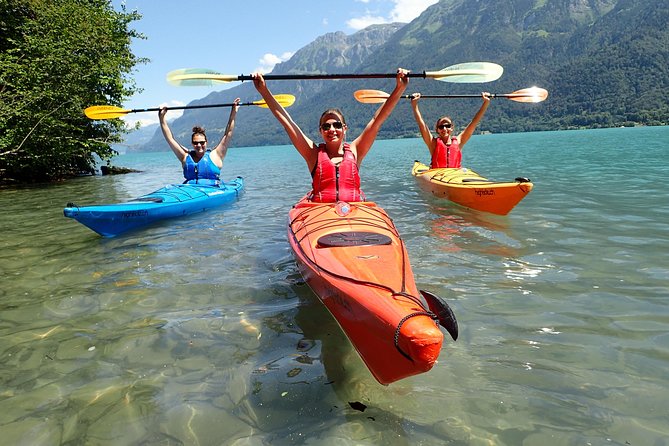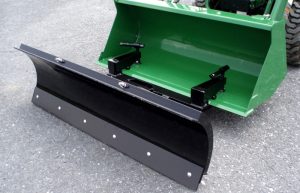Contents
- Choosing the Right Equipment
- Preparing for Your Adventure
- Getting Started with the Ascend 12T Kayak
- Safety on the Water
- Exploring Different Types of Waters
- Day Trips and Overnight Excursions
- Navigating Challenging Waters
- Fishing from the Ascend 12T Kayak
- Maintaining and Storing Your Kayak
- Joining the Kayaking Community
Are you ready to embark on an exciting kayaking adventure? Look no further because “The Ultimate Guide to Ascending the Waters with a 12T Kayak” is here to help you conquer the waves and explore the beauty of nature. Whether you are a seasoned kayaker or a beginner, this comprehensive guide will provide you with all the tips and tricks you need to navigate the waters with ease. From choosing the right equipment to mastering essential paddling techniques, get ready to elevate your kayaking skills and take your outdoor adventures to new heights with the 12T kayak.
Choosing the Right Equipment
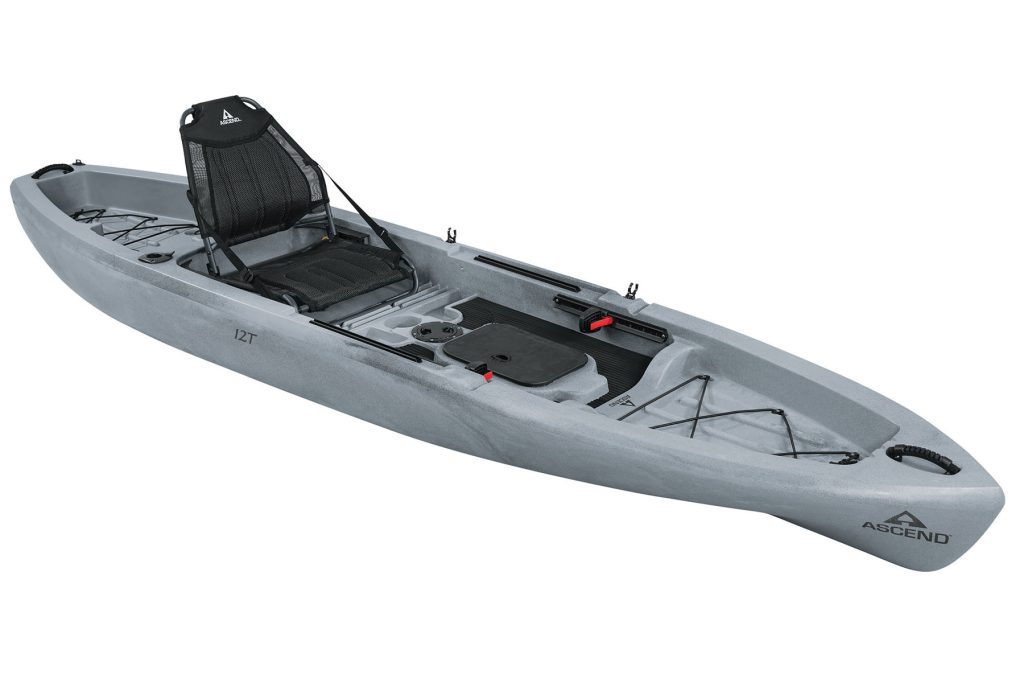
Understanding the Ascend 12T Kayak
When it comes to choosing the right kayak for your adventures on the water, the Ascend 12T is a top contender. This kayak is designed with the perfect balance of stability and maneuverability, making it suitable for both beginners and experienced kayakers. With a length of 12 feet and a weight capacity of 350 pounds, the Ascend 12T provides ample space and stability to ensure a comfortable and enjoyable ride on the water. Whether you’re planning to explore calm lakes, rivers, or even coastal areas, the Ascend 12T kayak will be your reliable companion.
Essential Gear and Accessories
While the Ascend 12T kayak is a great starting point for your kayaking adventures, there are a few essential gear and accessories that you’ll need to enhance your experience on the water. Firstly, a durable paddle is a must-have. Look for a paddle that is lightweight and adjustable, allowing you to find the perfect length for your paddling style. A personal flotation device (PFD) is also crucial for your safety. Make sure to choose a PFD that fits you well and is designed specifically for kayaking.
Other accessories that you may want to consider include a dry bag to keep your belongings safe and dry, a kayak anchor for stability in windy conditions or while fishing, and a kayak cart for easy transportation of your kayak to and from the water. Additionally, investing in a waterproof phone case or a waterproof camera will allow you to capture your kayaking memories without worrying about water damage.
Safety Equipment
Safety should always be a top priority when venturing out onto the water. Alongside your personal flotation device, there are a few other essential safety equipment items that should always be on board your Ascend 12T kayak. A whistle is an important signaling device that can be used to attract attention in case of an emergency. It is also a good idea to have a float plan, which includes details of your trip, such as your planned route and estimated return time. Share this plan with a trusted friend or family member before you set off on your adventure.
Additionally, having a first aid kit available is always a smart idea for any outdoor activity. Include items such as bandages, antiseptic wipes, adhesive tape, and pain relievers in your kit. You should also carry a knife or multi-tool, which can come in handy for various situations, from cutting fishing lines to freeing yourself from tangled vegetation.
Proper Clothing and Footwear
Choosing the right clothing and footwear is essential to ensure your comfort and safety on the water. When kayaking, it’s important to dress in layers, as weather conditions can change unexpectedly. Start with a moisture-wicking base layer to keep you dry and comfortable. Over that, layer a lightweight, quick-drying shirt and a waterproof and windproof jacket for protection against the elements.
For your lower body, opt for quick-drying shorts or lightweight pants, depending on the weather and your personal preference. Avoid cotton as it takes a long time to dry, which can leave you feeling cold and uncomfortable. Additionally, wearing water shoes or sandals with good traction is important to protect your feet and provide stability when entering and exiting your kayak. Avoid flip-flops or any open-toe footwear as they can easily slip off and expose your feet to potential hazards.
Preparing for Your Adventure
Checking Weather Conditions
Before embarking on any kayaking adventure, it is crucial to check the weather conditions for your chosen location. Keep in mind that weather patterns can change quickly, especially near bodies of water. Look for reliable sources of weather information, such as local weather websites or apps, and pay attention to factors such as wind speed, precipitation, and temperature. If you notice any severe weather warnings or unfavorable conditions, it may be best to postpone your trip for another day.
Selecting the Right Location
Choosing the right location for your kayaking adventure is key to your overall experience. Consider factors such as your skill level, the type of water you prefer, and the scenery you want to enjoy. For beginners, calm lakes and ponds are ideal, as they offer a serene environment with minimal currents and waves. Rivers and streams, on the other hand, provide a bit more excitement and adventure, but make sure to choose sections that match your skill level.
If you’re looking for a more challenging experience, coastal kayaking allows you to explore the beauty of the shoreline, often with opportunities for wildlife sightings. Venturing out into the ocean is reserved for experienced kayakers, as it involves dealing with potentially rougher waters and stronger currents. Choose a location that aligns with your ability level and always ensure you have the necessary skills and equipment for the selected environment.
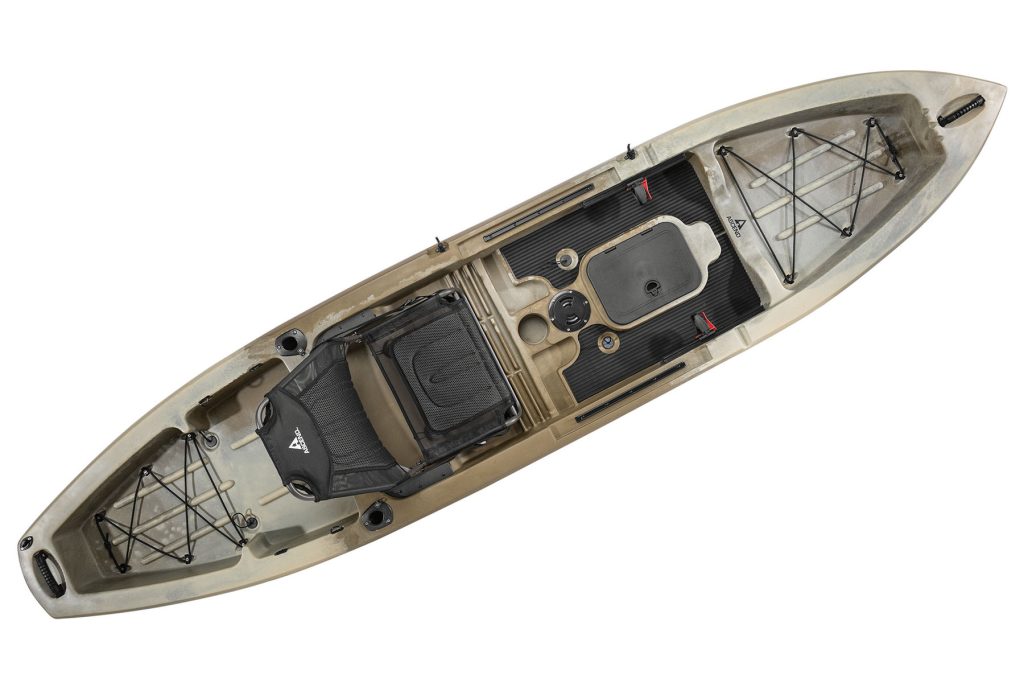
Planning Your Route
Before setting off on your kayaking adventure, take some time to plan your route. Studying maps and guidebooks specific to your chosen location will give you a better understanding of the area and any potential hazards you may encounter. Identify points of interest along your route, such as scenic spots or areas renowned for wildlife sightings, to enhance your overall experience. It’s also a good idea to set a time limit for your trip, ensuring that you have enough daylight and energy to complete your planned route.
Informing Others about Your Trip
Never embark on a kayaking adventure without informing someone about your plans. Share the details of your trip, including your planned route, estimated time of departure, and expected return time, with a trusted friend or family member. In case of an emergency or if you fail to return as scheduled, this information will be invaluable for search and rescue teams. It’s essential to check in with the designated contact person both before and after your trip to provide updates on your safety and progress.
Getting Started with the Ascend 12T Kayak
Kayak Setup and Adjustments
Before hitting the water with your Ascend 12T kayak, it’s important to set it up correctly and make any necessary adjustments. Start by ensuring that the kayak is on a flat surface and adjust the footrests to fit your height and leg length. Properly adjusting the footrests is crucial for maintaining stability and maximizing your paddling power.
Next, adjust the seat to ensure proper posture and comfort. The seat should be aligned with the centerline of the kayak and allow your legs to comfortably rest on the footrests. Take the time to experiment with different seat adjustments to find the position that works best for you. Once you’ve made these initial adjustments, you can start attaching any additional accessories, such as rod holders or a kayak anchor, before moving on to the next step.
Entering and Exiting the Kayak
Entering and exiting your kayak may seem like a simple process but doing it correctly helps prevent accidents and ensures a smooth transition onto and off the water. To enter the kayak, position it parallel to the shoreline and kneel beside it. Hold onto the sides of the kayak and lower yourself into a seated position. Once seated, swing your legs into the kayak and place them inside.
When exiting the kayak, paddle near the shoreline and find a shallow spot. Reverse the process of entering the kayak by swinging your legs out and placing them in the water. Use your hands and arms to push yourself out of the kayak and stand up in shallow water. Take caution when getting in and out of the kayak to avoid tipping it over or getting injured in the process.
Proper Paddling Techniques
Mastering proper paddling techniques is essential for efficient and enjoyable kayaking. Hold the paddle with both hands, ensuring that your grip is relaxed and comfortable. Your hands should be slightly wider than shoulder-width apart. As you paddle, rotate your torso to generate power and engage your core muscles. This technique is more efficient than relying solely on your arms and will help you maintain stamina on longer paddles.
The two basic paddle strokes to familiarize yourself with are the forward stroke and the sweep stroke. The forward stroke involves reaching forward with the paddle blade, inserting it into the water near your toes, and pulling it back alongside the kayak. The sweep stroke, on the other hand, is used to turn the kayak. Start by reaching out to the side with the blade angled away from the kayak. Then, sweep the paddle through the water in an arc toward the stern of the kayak.
Navigating Different Water Conditions
As you gain experience with your Ascend 12T kayak, you’ll likely encounter various water conditions that require different techniques for navigation. In calm lakes and ponds, enjoy the serenity and practice your paddling techniques without worrying about strong currents or waves. Keep in mind that windy conditions can still affect your stability, so it’s important to paddle with caution and adjust your strokes to compensate for any drift.
Rivers and streams offer a bit more excitement and require careful navigation. Pay attention to the flow of the water and use your paddle and body movements to steer the kayak through twists and turns. Be aware of any obstacles or strainers, such as fallen trees or rocks, that can potentially cause entrapment. Coastal kayaking is a great way to explore the beauty of the shoreline, but keep an eye out for tides and currents that can affect your navigation. Adventuring in the ocean requires advanced skills and knowledge of navigation, as you’ll be dealing with potentially rougher waters and stronger currents.
Safety on the Water
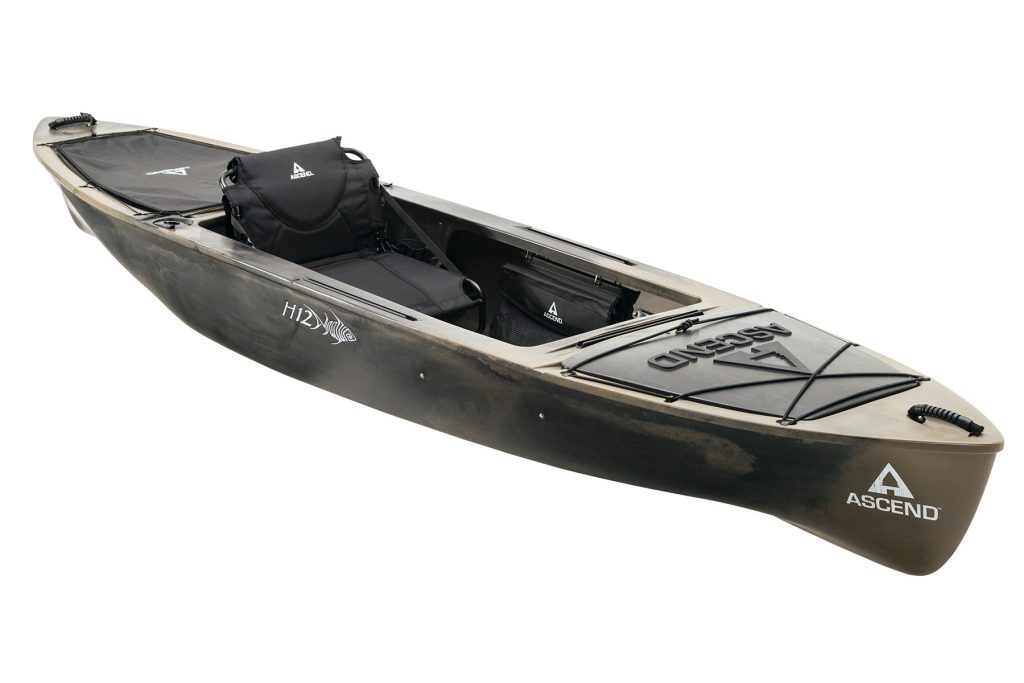
Understanding Water Hazards
When kayaking, it’s important to be aware of potential water hazards that can pose a risk to your safety. One common hazard is low-hanging branches and fallen trees, which can obstruct your path and potentially cause entrapment. Always scan the area ahead and be prepared to maneuver around any obstacles. Another hazard to watch out for is rocks or shallow areas, as these can cause your kayak to get stuck or capsize if not navigated carefully.
Strong currents and waves are hazards commonly found in rivers and coastal areas. These can make it challenging to steer your kayak and maintain stability. It’s important to have the necessary skills and experience to navigate these conditions safely. Additionally, keep an eye on changing weather conditions as storms or heavy winds can quickly create hazardous situations on the water.
Learning Basic Rescue Techniques
Accidents can happen even to the most experienced kayakers, so it’s crucial to familiarize yourself with basic rescue techniques. One important rescue technique is the “T-rescue,” which involves righting an overturned kayak with the help of another kayaker. Practice this technique with a partner, as it can be an invaluable skill in case of an emergency.
Self-rescue techniques, such as the “paddle float rescue,” are also important to learn. This technique involves using a paddle float and a self-rescue strap to reenter your kayak after capsizing. Invest time in practicing these techniques in calm and controlled water conditions to build your confidence and improve your chances of successfully handling an emergency situation.
Using Safety Signals and Communication
Clear and effective communication is crucial when kayaking, especially in group trips or emergency situations. Learn and use commonly recognized safety signals to communicate with other kayakers or boaters on the water. Signals such as the “stop” or “help” signal can convey important messages without the need for verbal communication.
Having a waterproof whistle can also be a useful tool for signaling for help in case of an emergency. Three short blasts on a whistle is a universally recognized distress signal. Familiarize yourself with these signals and ensure that everyone in your group understands their meanings. It’s also a good idea to establish a communication plan before setting off on your trip, ensuring that everyone knows how to contact each other in case of separation or emergency.
Dealing with Emergency Situations
While kayaking is generally a safe and enjoyable activity, it’s important to be prepared for emergency situations. In case of an emergency, try to stay calm and assess the situation before taking any action. If you’re kayaking with a group, coordinate and communicate with your fellow kayakers to collectively overcome the situation.
Carrying a safety kit, which includes items such as a first aid kit, a knife or multi-tool, and a dry bag with essential supplies, will help you be better prepared to handle emergencies. Additionally, having a means of communication such as a waterproof phone or a handheld VHF radio can be crucial for calling for help if needed. Always prioritize your safety and the safety of others, and seek assistance from professionals if the situation exceeds your level of expertise.
Exploring Different Types of Waters
Calm Lakes and Ponds
Calm lakes and ponds offer a peaceful and serene environment for kayaking. These bodies of water are ideal for beginners or those who seek a relaxing experience on the water. As you paddle through calm lakes and ponds, take in the beauty of the surrounding nature and enjoy the tranquility. Practice your paddling techniques and take breaks to appreciate the scenery or engage in other activities such as fishing or wildlife observation.
Rivers and Streams
Rivers and streams provide a more dynamic kayaking experience, with flowing water and varying degrees of difficulty. The challenge and excitement of navigating through twists and turns, and occasionally encountering small rapids or currents, make kayaking on rivers and streams an adventurous choice. It’s crucial to choose sections of rivers or streams that match your skill level and always be aware of potential hazards, such as fallen trees or strong currents.

Coastal Kayaking
If you’re looking to explore the beauty of the shoreline and potentially spot marine wildlife, coastal kayaking is the perfect choice. Coastal kayaking allows you to navigate along the coastlines of oceans or large bodies of water, experiencing the unique sights and sounds of the coastal environment. Keep in mind that coastal kayaking can be more challenging due to the presence of tides, currents, and potentially rougher waters. Familiarize yourself with the specific conditions of the coastline you plan to explore and always prioritize safety.
Adventuring in the Ocean
Venturing out into the ocean is a thrilling and demanding experience that should be reserved for experienced kayakers. Ocean kayaking requires advanced skills and an understanding of navigation, currents, and potentially rough sea conditions. It’s important to have proper safety equipment, such as a reliable marine VHF radio, and to be well-prepared for potential weather changes. Always check the weather forecast, wear appropriate safety gear, and have a solid plan in place before embarking on ocean kayaking adventures.
Day Trips and Overnight Excursions
Packing Essentials
Whether you’re planning a day trip or an overnight excursion, packing the right essentials is crucial for a successful kayaking adventure. Start with the basics such as sunscreen, a hat, and sunglasses to protect yourself from the sun’s harmful rays. Bring enough water to stay hydrated throughout your trip and pack energy-rich snacks or meals to keep you fueled.
Other essentials include a map or a navigation device, a compass, and a waterproof watch to help you stay on schedule. Additionally, consider bringing a dry bag to protect your belongings from water damage, a headlamp or flashlight for nighttime navigation, and a repair kit for any unexpected equipment issues. Remember to pack light and only bring what you truly need to avoid weighing down your kayak.
Preparing for Overnight Camping
If you plan to camp overnight during your kayaking adventure, proper preparation is key. Before setting off, familiarize yourself with the regulations and guidelines of the area where you plan to camp. Ensure that you have a suitable camping spot, either on land or on designated camping platforms if available. Consider choosing a spot that is sheltered from the wind and offers easy access to water sources.
Pack a tent or a hammock, a sleeping bag, and a sleeping pad for a comfortable night’s rest. It’s also important to bring camping essentials such as a camping stove, cookware, and food that is easy to prepare and store. Don’t forget additional items like insect repellent, a camping chair, and a book or games for entertainment. Leave no trace by properly disposing of your waste and leaving your campsite as you found it.
Planning Meals and Cooking Options
Planning your meals and cooking options is crucial for staying nourished and energized during your kayaking adventure. For day trips, pack lightweight and easy-to-eat snacks such as energy bars, trail mix, and fruit. If you’re planning an overnight trip, consider freeze-dried or dehydrated meals that are lightweight and require minimal preparation. These types of meals only require adding hot water, which can be easily achieved with a camping stove.
Pack a few essential cooking utensils and use lightweight, compact cookware that can easily fit in your kayak. Opt for meals that provide a good balance of protein, carbohydrates, and healthy fats to replenish your energy levels. Don’t forget to pack enough water or a water filtration system to ensure a safe drinking water supply during your trip.
Staying Hydrated and Sustained
Staying hydrated and sustained is crucial for maintaining your energy and well-being during your kayaking adventure. Proper hydration is especially important when engaging in physical activities, as the body loses water through sweat. Invest in a reliable water bottle or hydration pack that can be easily accessed while kayaking.
In addition to water, it’s important to replenish your electrolytes, which are essential for proper bodily functions. Consider packing electrolyte-enhanced sports drinks or tablets to add to your water. Snack on high-energy foods such as nuts, energy bars, and dried fruit throughout the day to keep your energy levels up. Eating small, frequent meals or snacks can help sustain your energy over extended periods of physical activity.
Navigating Challenging Waters
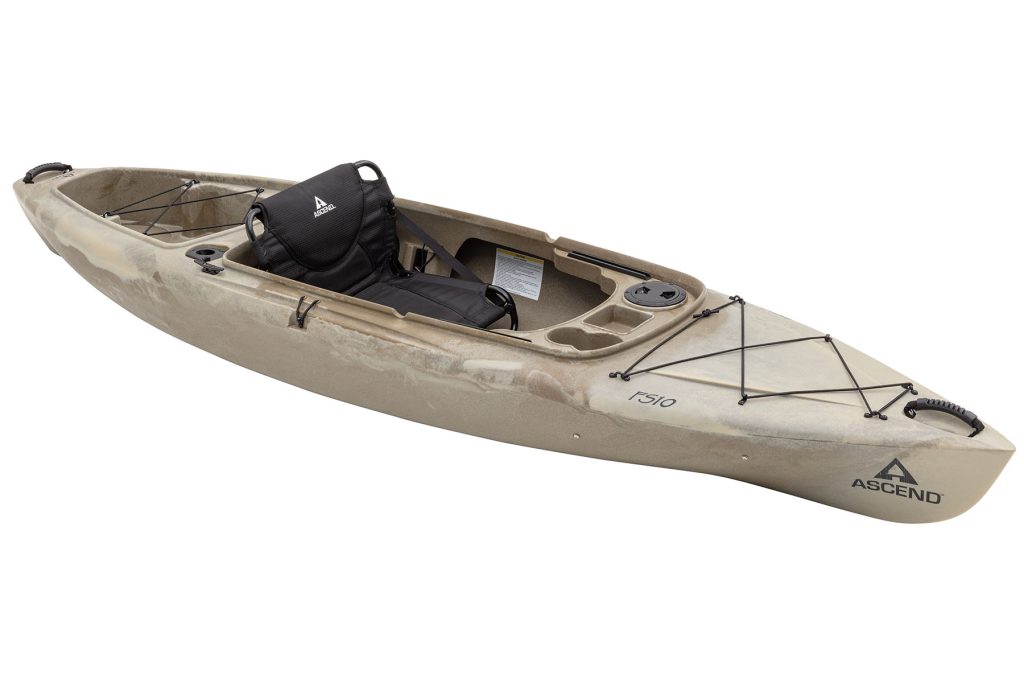
Dealing with Strong Currents
Strong currents can be challenging to navigate, but with the right techniques, you can overcome them safely. When facing a strong current, angle your kayak upstream and paddle at an angle towards the opposite bank. This technique, known as ferrying, allows you to cross the current more efficiently than trying to go directly against it.
Another technique to consider is “eddy hopping.” Eddies are areas of water where the current flows in the opposite direction, creating a calm pocket behind obstacles such as rocks or shoreline features. By strategically paddling from one eddy to another, you can make progress upstream against a strong current.
Understanding Whitewater Kayaking
Whitewater kayaking is an exhilarating and challenging water sport that involves navigating through rapids and turbulent water. It requires advanced kayaking skills, specialized equipment, and a thorough understanding of the river’s characteristics. It’s essential to receive proper training and practice in a controlled environment before attempting whitewater kayaking.
Learning to read the river and understand the flow patterns and hazards is crucial for safety. The International Scale of River Difficulty categorizes rapids from Class I (easy, small waves) to Class VI (extreme and potentially life-threatening conditions). Start with easier rapids suitable for your skill level and gradually progress to more difficult ones as you gain experience.
Tackling Rough Sea Conditions
Kayaking in rough sea conditions requires advanced skills and knowledge of the ocean’s dynamics. It’s crucial to be aware of potential hazards such as large swells, breaking waves, and strong currents. Before venturing into rough seas, ensure that you have the necessary equipment, such as a reliable marine VHF radio, and that you are proficient in self-rescue techniques.
When paddling in rough seas, maintain a low and balanced posture to maximize stability. Keep a firm grip on your paddle, and apply controlled and powerful strokes to maintain control of your kayak. Practice bracing techniques to stay upright and maneuver through breaking waves. If you find yourself being pushed toward shore by strong currents, use ferrying techniques to safely cross the current and navigate to a safer location.
Safety in Rapid or Turbulent Waters
Rapids and turbulent waters can provide an exhilarating kayaking experience, but they also come with potential risks. Proper safety measures and techniques are essential for navigating through rapids safely. Consider taking a whitewater kayaking course to develop your skills and understand the dynamics of rapids.
Always wear your personal flotation device (PFD) and a helmet in rapid or turbulent water situations. These protective gears will provide crucial safety in case of capsizing or hitting rocks. Avoid shallow areas and submerged obstacles, and learn to identify safe routes through the rapids. Paddle with a buddy or a group, as their assistance can be invaluable in case of an emergency.
Fishing from the Ascend 12T Kayak
Choosing the Right Fishing Gear
The Ascend 12T kayak is an excellent choice for fishing enthusiasts, offering stability, maneuverability, and ample space for your gear. When choosing fishing gear for your kayak, consider the type of fishing you’ll be doing and the species you’ll be targeting. Opt for a lightweight and versatile fishing rod and reel combo that can handle a variety of fishing techniques.
Also, invest in a tackle box or bag to keep your fishing lures, hooks, and other accessories organized and easily accessible. You may want to consider using a fishfinder to locate fish and determine their depth. Finally, don’t forget essential items such as a landing net, a fillet knife, and a cooler to keep your catch fresh.
Setting Up Your Fishing Kayak
Before launching your Ascend 12T kayak for a fishing adventure, make sure you have it properly set up for fishing. Attach rod holders to secure your fishing rods while paddling or waiting for a bite. Position the rod holders within easy reach, allowing you to grab your rod quickly when a fish strikes.
Additionally, consider installing a fishfinder mount or a GPS device for better navigation and locating fish hotspots. You may also want to include a tackle storage system within arm’s reach. This can be accomplished with tackle crate systems or easily accessible pockets or compartments within the kayak. Properly setting up your fishing kayak will enable you to enjoy a seamless and efficient fishing experience.
Techniques for Kayak Fishing
Kayak fishing requires a slightly different approach compared to fishing from other types of watercraft. To maximize your success, employ stealthy techniques that won’t spook the fish. Slow and gentle paddle strokes or drifting with the current can help you silently approach your desired fishing spot.
Consider using topwater lures or baitcasting techniques for targeting fish species near the surface. Casting parallel to structure, such as fallen trees or underwater vegetation, can increase your chances of enticing a strike. Pay attention to changes in water depth and temperature, as these can indicate the presence of fish. Experiment with different lures and techniques to determine what works best for your target species and the conditions you’re fishing in.
Tips for Catching and Releasing Fish
Practicing responsible angling is crucial for the conservation of fish populations and the sustainability of fisheries. When catching and releasing fish from your Ascend 12T kayak, follow these tips to minimize harm to the fish and ensure their survival.
Firstly, use barbless hooks or crimp the barbs on your hooks to facilitate easy hook removal. This minimizes injury to the fish and makes your catch-and-release process smoother. Secondly, handle fish with wet hands or use a rubberized Landing Glove to minimize the removal of their protective slime coat, which helps protect the fish from infections.
Limit the amount of time that the fish is out of the water, especially in warmer temperatures, to prevent stress and injury. When releasing the fish, gently hold it facing into the current or in calm water to allow it to regain its strength before swimming away. Practice catch-and-release fishing whenever possible to preserve fish populations for future generations of anglers.
Maintaining and Storing Your Kayak
Cleaning and Caring for Your Kayak
Regular cleaning and maintenance are necessary to keep your Ascend 12T kayak in optimal condition. After each kayaking trip, rinse off any dirt or saltwater with fresh water. Use a soft sponge or cloth to remove any stubborn stains or debris. Avoid using harsh chemicals or abrasive cleaning agents, as they can damage the kayak’s surface.
Inspect the kayak for any signs of damage, such as cracks or scratches, and address them promptly. Apply a protective coating or wax to the kayak’s exterior to minimize UV damage and keep it looking new. Store your kayak in a cool, dry place away from direct sunlight when not in use to further protect it from deterioration.
Inspecting and Repairing Possible Damage
Regular inspections are crucial to identify any damage that may have occurred during your kayaking adventures. Examine the kayak’s hull for any punctures, cracks, or areas of stress. Pay attention to the keel, which can be susceptible to damage when navigating rocky areas.
If you notice any damage, assess the severity and determine whether it requires immediate repair. Small cracks or scratches can often be fixed with a marine-grade adhesive or epoxy resin. For more significant damage, consult with a professional or refer to the kayak manufacturer’s guidelines for repairs. Addressing damage promptly will help prevent further deterioration and ensure your kayak’s longevity.
Proper Storage and Transportation
Proper storage and transportation play a significant role in prolonging the life of your Ascend 12T kayak. When storing your kayak, consider using a kayak rack or straps that suspend the kayak above the ground. This helps prevent distortion of the hull and damage from pests or moisture. Alternatively, you can store the kayak on its side in a secure and dry area.
During transportation, ensure that your kayak is properly secured to your vehicle’s roof rack or trailer. Use kayak straps or bungee cords to secure the kayak tightly, minimizing movement during transit. Periodically check the straps or cords to ensure they remain tight and secure throughout your journey. Follow applicable local regulations and guidelines for safely transporting your kayak on the road.
Winterizing Your Kayak
If you live in an area with cold winters, proper winterization of your kayak is essential to protect it from freezing temperatures. Remove any excess water from the kayak by turning it upside down or tilting it to allow water to drain out. This prevents water from freezing and potentially damaging the kayak’s structure.
Store your kayak in a temperature-controlled environment, such as a garage or a basement, to avoid extreme temperature fluctuations. If outdoor storage is the only option, ensure that your kayak is covered with a waterproof tarp or a kayak cover to protect it from snow and ice. Before using your kayak again in the spring, thoroughly inspect it for any damage or signs of wear, and address them promptly.
Joining the Kayaking Community
Finding Local Kayaking Groups
Joining a local kayaking group is a fantastic way to connect with like-minded individuals who share your passion for kayaking. These groups often organize regular trips, offer training and education opportunities, and provide a supportive community for kayakers of all skill levels.
To find local kayaking groups, start by searching online for kayak clubs or associations in your area. Social media platforms, such as Facebook, often have dedicated groups for regional kayaking communities. Reach out to these groups and express your interest in joining. Many kayaking groups welcome newcomers and are more than willing to share their expertise and experiences.
Participating in Group Trips and Events
Participating in group trips and events organized by local kayaking groups is an excellent way to enhance your kayaking skills, explore new areas, and meet other kayakers. These trips are often tailored to various skill levels, ensuring that everyone can participate and have an enjoyable experience.
Group trips provide an opportunity to learn from more experienced kayakers, gain insights into different paddling techniques, and discover hidden gems in your local waterways. Whether it’s a leisurely paddle on a calm lake or an adventurous expedition on a river, group trips allow you to expand your kayaking horizons and create lasting memories with fellow enthusiasts.
Learning from Experienced Kayakers
One of the best ways to improve your kayaking skills is by learning from experienced kayakers. Seek out opportunities to paddle with seasoned kayakers or enroll in kayaking lessons and workshops offered by kayak schools or outdoor adventure companies.
Experienced kayakers can offer valuable insights into paddling techniques, safety practices, and navigation skills. They can share their knowledge of local waterways and advise on the best equipment and gear for different kayaking activities. Engage in conversations, ask questions, and be open to receiving feedback and guidance. Learning from those with more experience will not only enhance your kayaking abilities but also foster a sense of camaraderie within the kayaking community.
Sharing and Celebrating Your Kayaking Experiences
Finally, don’t forget to share and celebrate your kayaking experiences with others. Whether it’s through social media platforms, blogs, or simply sharing stories with family and friends, sharing your adventures on the water can inspire others and keep the kayaking spirit alive.
Consider documenting your trips with photographs or videos to capture the beauty of the places you explore and the joy of being on the water. Share your favorite paddling spots, insider tips, or lessons learned along the way. Celebrate milestones, such as conquering challenging waters or catching your first fish from your kayak. By sharing and celebrating your kayaking experiences, you contribute to the vibrant and inclusive kayaking community while inspiring others to embark on their own watery adventures.
Kayaking with the Ascend 12T is not just a thrilling outdoor activity but a way to connect with nature, challenge yourself, and create lasting memories. By understanding the equipment, practicing safety measures, and continuously learning and exploring, you can unlock the full potential of your kayaking adventures. So grab your Ascend 12T kayak, gather your gear, and prepare to ascend the waters with confidence and enthusiasm!

